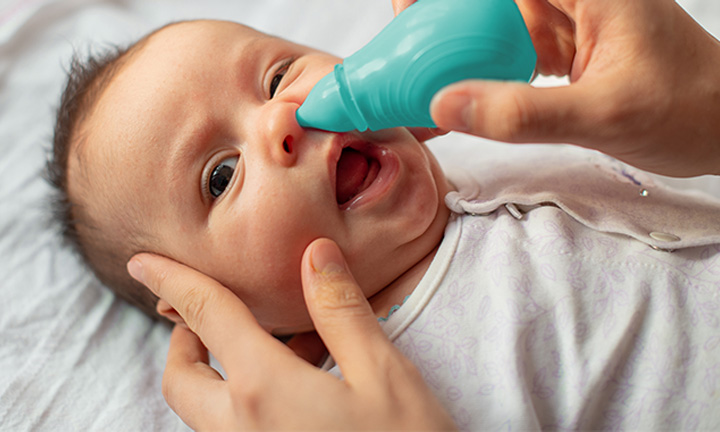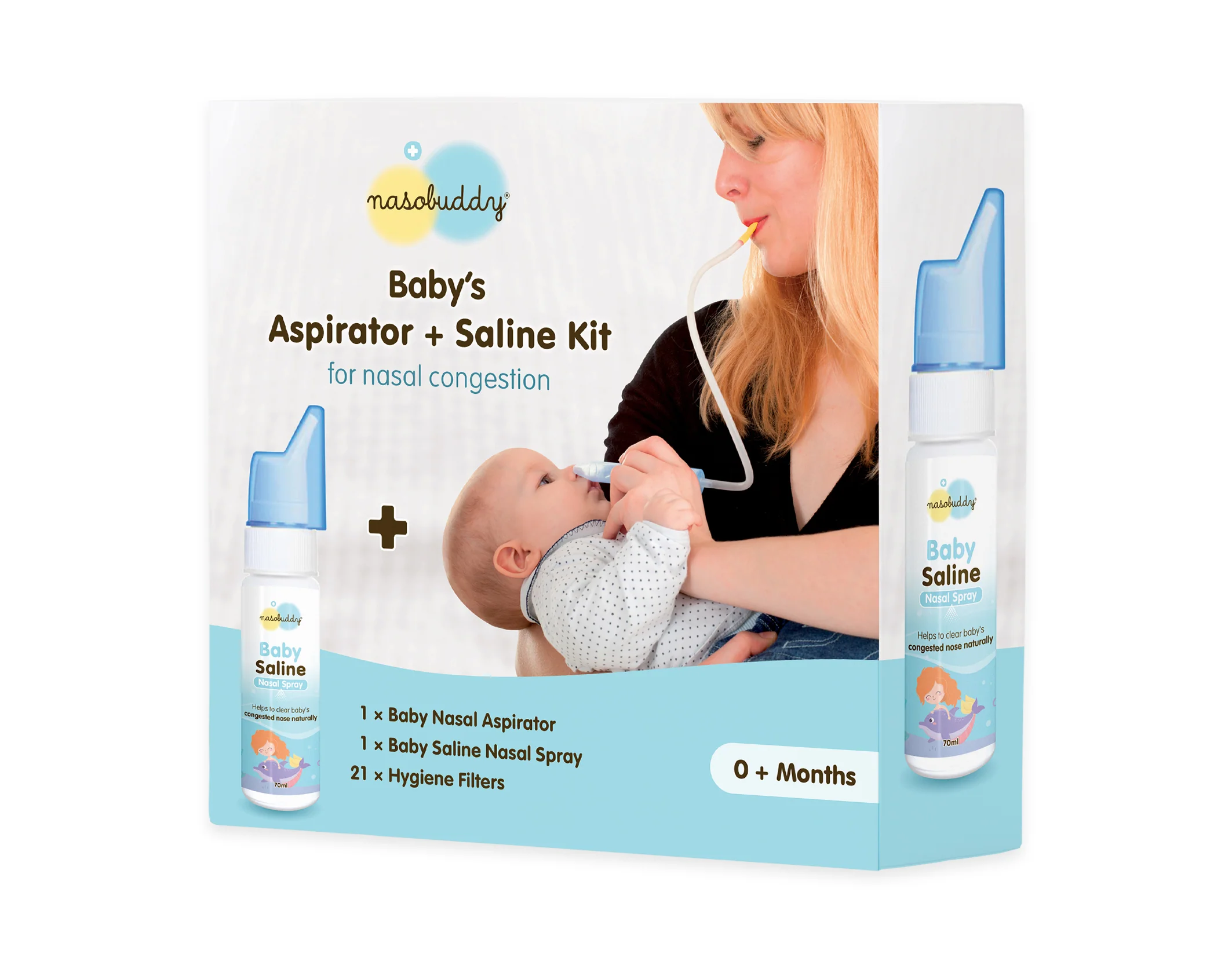Nasal Congestion in Infants. Dr. Narmin Azizova

Nasal congestion in infants occurs when the tissues inside the nose become swollen or when mucus builds up in the nasal passages. Since the nasal airways of young children are naturally narrow, and children under 2–3 years old cannot clean their noses on their own, this condition can become more problematic.
According to the World Health Organization (WHO), respiratory infections — often associated with nasal congestion — are among the leading causes of illness in children under five worldwide. Additionally, dry air, household dust, and seasonal viruses (especially in winter) significantly increase the risk of nasal congestion.
If your baby has noisy breathing sounds from the nose, difficulty feeding, or trouble sleeping, it’s a clear sign that nasal cleaning is necessary. It’s best to clean the nose either before feeding or before sleep, as nasal breathing is crucial for infants. Babies are obligate nasal breathers for the first few months of life, meaning they primarily breathe through their nose.

When cleaning a baby’s nose, especially during the breastfeeding period, it is important to avoid using high pressure. It is recommended to use saline drops or specially designed nasal sprays with low pressure — usually about 1 ml per nostril. If there is a significant mucus blockage, start by rinsing the nose with saline solution, then gently use a nasal aspirator to clear it.
Saline solutions are safe because they match the natural fluid balance of the body and do not irritate the nasal passages. You can use them from the newborn period onwards. Simply apply 2–3 drops of saline into each nostril and wait for 30–60 seconds. Afterwards, turn the baby onto their stomach. This position may help the baby sneeze and expel the mucus naturally.
The nasal lining contains ciliated epithelial cells that help trap and remove microbes. When the nose is blocked, these defense mechanisms are impaired, increasing the risk of infection. Some parents worry that nasal irrigation might distress their baby, but it is essential to understand that leaving the nose blocked may cause even more discomfort and health risks.
When choosing nasal sprays, always check the recommended age range. Depending on the brand, sprays may be designated for babies over 3 months or 2 years old. For newborns, it is generally not recommended to use sprays unless absolutely necessary, and even then, only with very gentle pressure.

Some nasal solutions contain higher concentrations of salt or additional ingredients. These should not be used without consulting your pediatrician, especially in newborns, as they may irritate delicate nasal tissues. Stick with simple isotonic saline solutions unless otherwise advised by your doctor.
If nasal congestion is left untreated, it can lead to complications such as postnasal drip, which can result in bronchitis, pneumonia, or even middle ear infections (otitis media). This is why regular nasal hygiene with saline (including seawater or ocean water solutions) is strongly recommended to keep the nasal passages clean and open.
Finally, if nasal congestion is accompanied by fever, rapid breathing, poor feeding, severe discomfort, or if it lasts longer than two weeks, it is crucial to consult a pediatrician. Persistent nasal congestion could be a sign of underlying respiratory infections or allergies that require medical attention.
Did you know?
- According to global pediatric health data, up to 80% of infants experience episodes of nasal congestion, especially in their first year of life.
- The WHO emphasizes maintaining good indoor air quality, especially during winter, to reduce respiratory illnesses in children.
- Studies show that routine saline nasal irrigation can reduce the need for medications and lower the risk of complications like ear infections.

Narmin Azizova